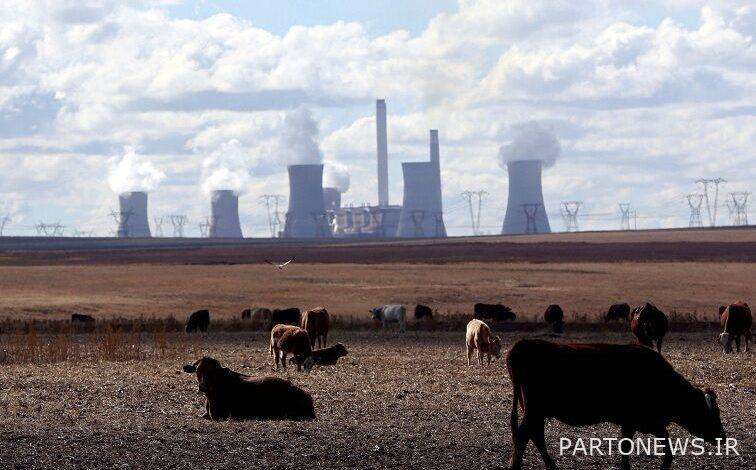The role of agriculture in the water crisis

Shargh newspaper published a note written by Majid Sajjadi, a university professor, in a note written by Majid Sajjadi on 28 October and wrote: In a previous note published in this newspaper entitled “Has chronology replaced the future of research !?” We tried to take a look at the issue of the water crisis, which has become the second most important issue in the world after the population crisis.
It was mentioned in that note that more than 80% of the water consumption in the Middle East is consumed in the agricultural sector, and this figure reaches 92% in our country, while the global average consumption in the field of agriculture is 70%. The difference between 70% and 92% of water consumption indicates the low irrigation efficiency that has emerged in the absence of modern irrigation systems and the patrol pattern modification plan. This efficiency has reached 35% in our country, which is lower than in Egypt, Libya and India.
The average production of agricultural products in the world for each cubic meter of water consumed is two and a half kilograms, while this amount of production in our country has reached 900 grams. The existence of two mountain ranges in the country and two seas in the north and south of it has created a wide climatic diversity in our country. This climate diversity for agriculture can be both an opportunity and a threat.
Opportunity Because climate diversity leads to diversity of agricultural products, and it is still unbelievable for some European countries that we can grow potatoes in one place and harvest the same crop in another at the same time. On the other hand, climate diversity can also be a threat, because when our plains are close to the mountains, hot and cold weather are adjacent to each other, and the movement of these climates can seriously damage farmers’ production.
However, the drought that has occurred in our country in the last 50 years has caused a lot of changes in this climate, and according to meteorological data recorded in our country in the last 72 years, the average rainfall has never been so low as last year. And farmers have experienced drought over the past 50 years in the previous crop year, so they should be subject to widespread support from the 13th government.
Today, some of the hardest 20 million people in our country live in rural areas. 25% of the country’s employment and 17% of the country’s GDP belongs to agriculture. Farmers produce about 130 million tons of crops, horticulture, livestock, fisheries and aquaculture with great effort, but from this point on, the production chain in the supply chain, from the farm to the people’s table, is always filled by intermediaries and brokers. Who, despite little effort, make large profits.
Therefore, the lack of proper marketing for the sale of agricultural products along with the water crisis, the lack of conversion and complementary industries has caused the migration of villagers to cities and mainly the outskirts of the country and the average marginal population has reached a worrying 20% in some provinces. The border is 30% past and will be one of the three threats to national security in the future for the country.
Therefore, if we want to think about the rural economy and the survival of the villagers in that environment, we must reduce the cost of producing their products, and this will not be possible except with the industrialization of agriculture, but the use of new technology requires a lot of financial resources. “Facing such facilities is very difficult for them because banks are still looking for real estate to pay loans to farmers, not in the villages but in the cities, and they are not willing to insure livestock, insured horticultural products, insured aquatic animals, and in a word.” Accept farmers’ insured products as collateral for payment of facilities; This means that 250 cows of a farmer, which constitutes a huge amount of capital, can never replace the real estate collateral in the city for the bank so that the farmer can benefit from the approved facility, and the result will be that the declared facility to farmers is always chanted. It remains on paper because the conditions required by banks for the payment of facilities by farmers can not be met. This problem is exacerbated in the nomadic sector because the nomads are not upright and are fluid; It is therefore pointless to demand real estate collateral from them to pay for the facility, but their “insured livestock” is able to guarantee their facility as a suitable collateral. Solving the problems of our nomadic population, which makes up about 1.2 million people and is present in 59% of our land, can make their role in the production of the country and the resistance economy even more irreplaceable.
Fortunately, the absolute value of the country’s nomadic population has remained almost constant since the beginning of the revolution due to the preservation of their territory and the preservation of their ancestral employment. The most important production strategy of nomads is summer and winter nomads. They move along the climate and adapt to climate change to access fodder (virtual water) for their 22 million head of livestock to provide 200,000 tons of red meat out of the 880,000 tons of meat needed by a population of 82 million. ; In other words, each nomad produces the meat needs of 20 Iranians; 40% of our exported carpets, 35% of handicrafts and 450,000 tons of milk and dairy products are produced by this huge group, which is present in 35 million hectares of 84 million usable pastures. In the year adorned with the same name, it should be on the agenda of the thirteenth government; Therefore, in addition to the lack of financial resources to equip villages, laws and regulations have created many obstacles to their industrialization; Laws such as the law of inheritance. This law is always a serious threat to the integrity of the land because when the agricultural land is shrunk, the degree of mechanization decreases because the use of modern machinery for a small land is not profitable for farmers and the result is the cost of producing one kilogram of crop. They increase significantly.
Although the law on the prevention of land fragmentation has been enacted in accordance with the law of inheritance, the guarantee of its implementation is limited; That is, when a person dies in a village and has four children, according to the law of inheritance, his land is divided among four people in proportion, and in order to escape the law, instead of being registered in the office, the lands are bought and sold, and it is natural for farmers to These small plots will traditionally continue farming, not mechanized. Therefore, reforming the laws and regulations on the one hand and implementing the plan for the cultivation of agricultural products (ie the correct answer to the three key questions, what products? To what extent? And where? Should be planted) on the other hand, is a very vital need in the country. We are considered.
The lack of such a ship model will lead to the destruction of basic agricultural resources, impoverishment of farmers, and the loss of water resources. The main problem related to the lack of progress in this plan is the cultivation pattern, lack of transparency and basic information. Experts believe that there is no coherent information about natural components such as climate, soil physics and chemistry, geography, biological and abiotic stresses, as well as socio-cultural, economic, food security, demand and market, employment and indigenous knowledge required to design a cultivation pattern. There is no hope that in the thirteenth government these obstacles will be removed so that this plan can be implemented as soon as possible.
.

